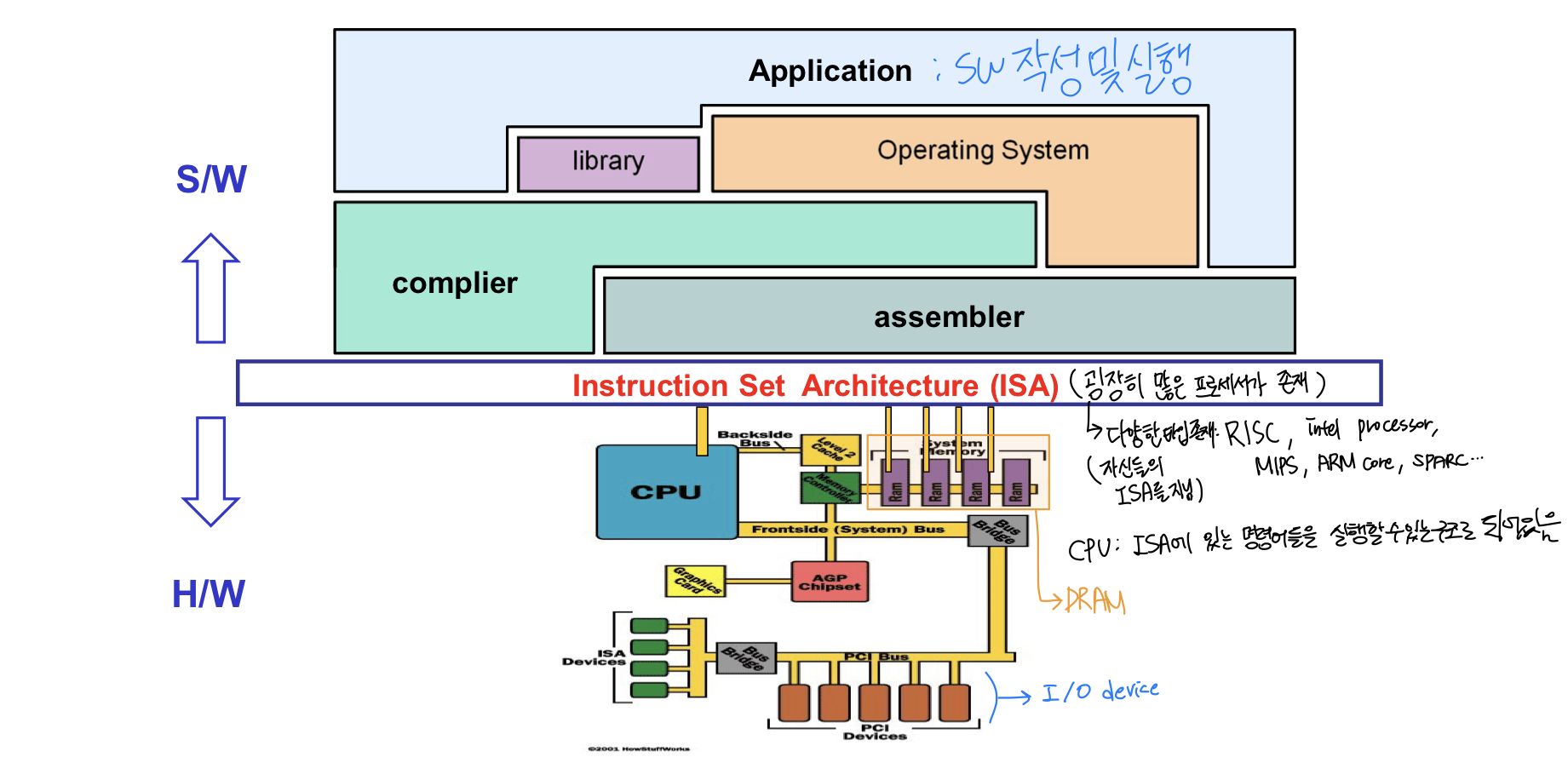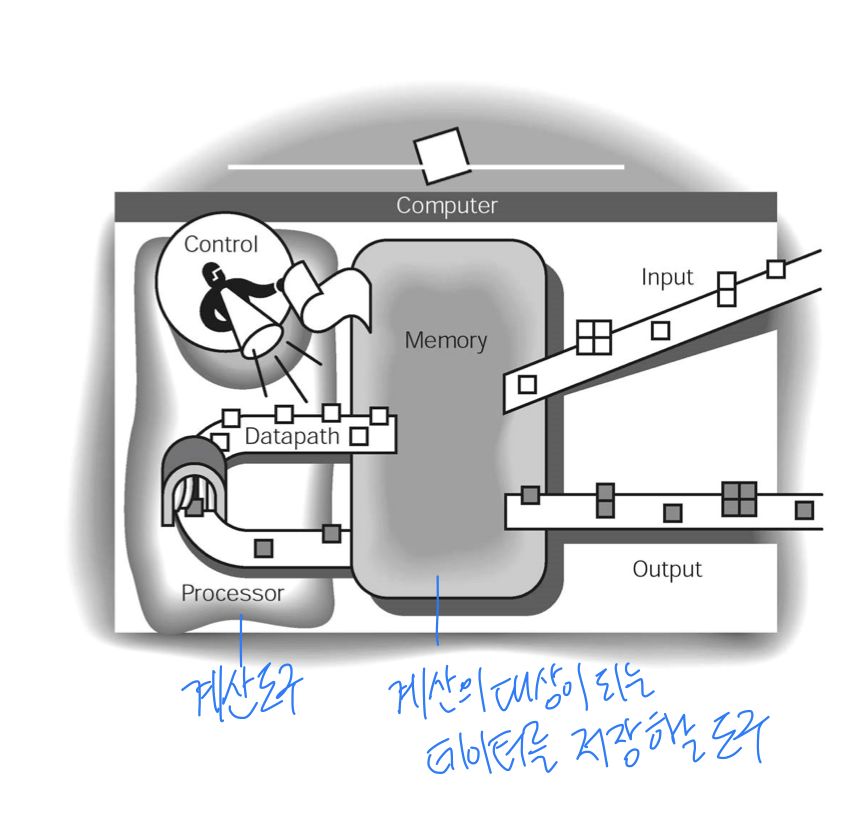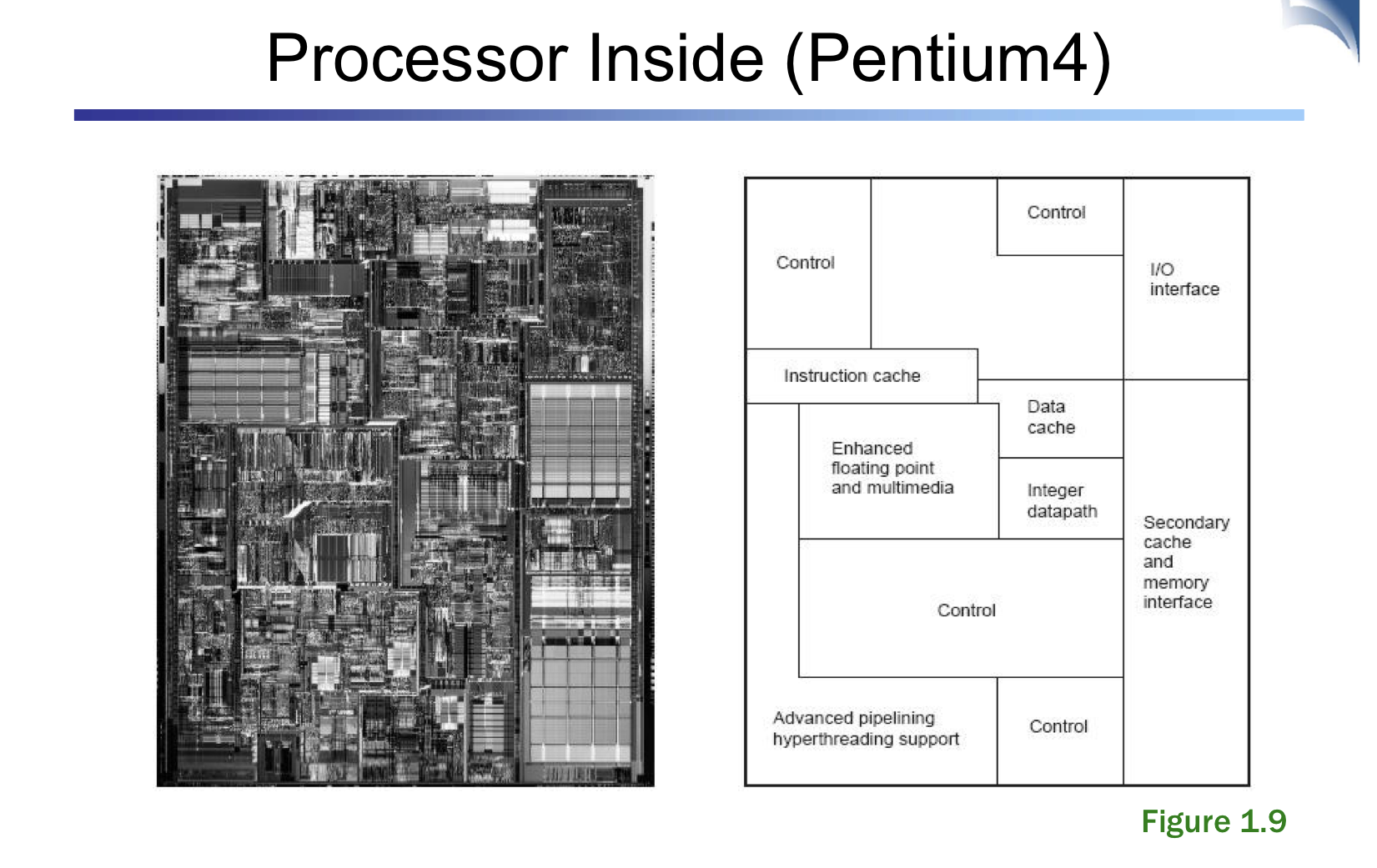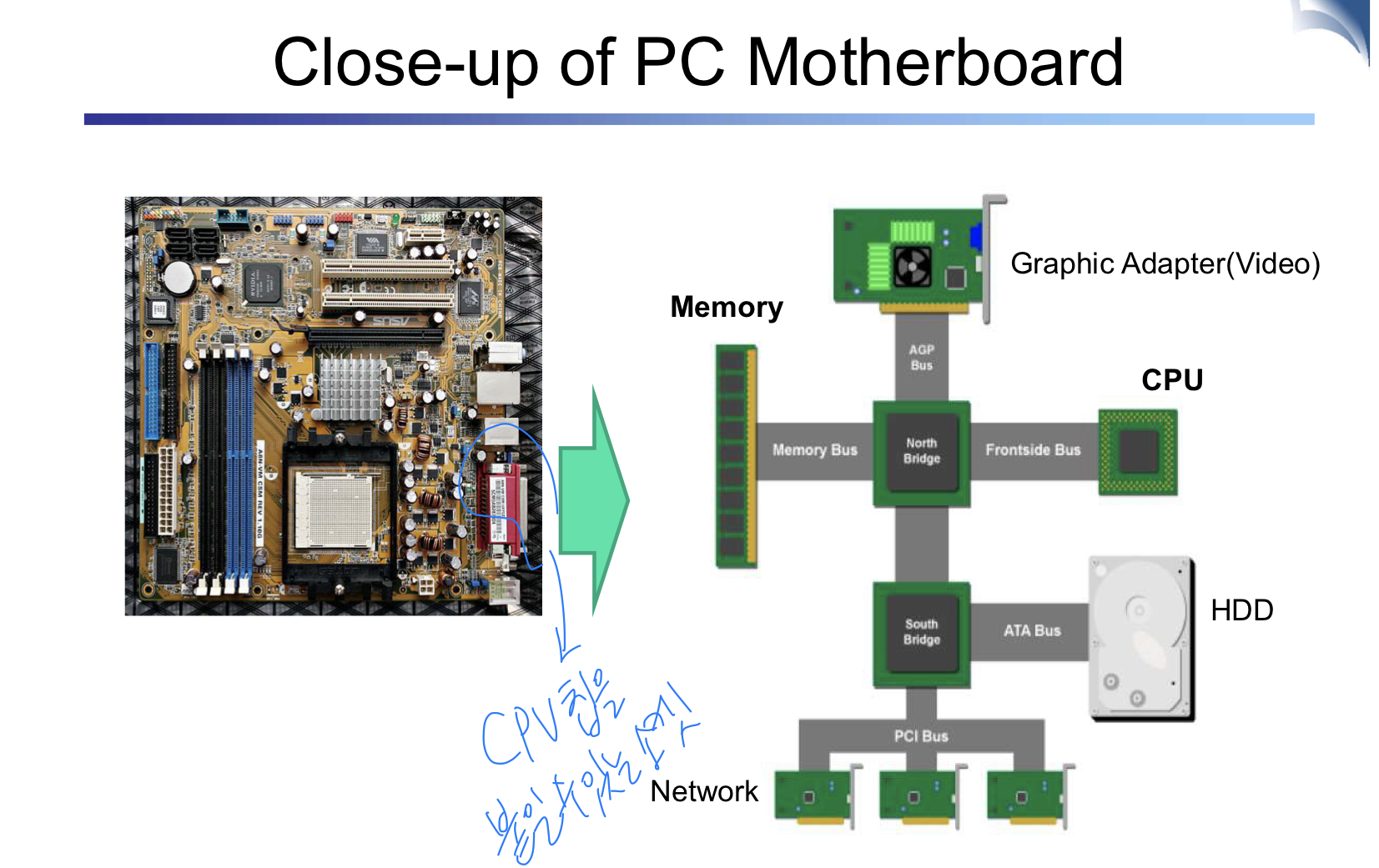Computer Abstractions & Technology
Abstraction
Abstraction in Computer Architecture
- hide lower-level details of computer systems (시스템의 자세한 사항들을 숨김으로)
- in order to facilitate design of sophisticated systems (복잡한 시스템 설계를 쉽게 함)
Instruction Set Architecture(ISA) (=Architecture)
- Interface between hardware and lower-level software
- programmer가 다루는 computer system의 속성(형태)
- concepture structure(state) and functional behavior (operation)
- as distinct from the organization of the data flows and controls, the logic design, and the physical implementation
- 명령어 집합 구조 : 하드웨어 최하위 계층 소프트웨어 사이의 인터페이스, 명령어, 레지스터, 메모리 접근, 입출력 등을 포함해서 정확히 작동하는 기계어 프로그램을 작성하기 위해 알아야 하는 모든 정보.

Computer System Inside

Classic 5 components
- Processor = Datapath + Control
- Memory
- Input & Output
Input/Output includes
- User-interface devices
- display, keyboard, mouse
- Storage devices
- HDD, ODD(Optical disc drive), Flash
- Network adpapters
- for communicating with other computers
Inside the Processor(CPU)
-
Datapath
- performs operations on data
- ALU, registers, internal buses
-
Control
- sequences(controls) the datapath, memory, and bus operations..
-
cf.cache memory
- called on-chip cache or level-1 cache
- small fast SRAM memory for immediate access to data


CPU Clocking
-
Digital hardware operations governed by a constant-rate clock

- Clock period: duration of a clock cycle
- e.g., 250ps = 0.25ns = 250 x 10^-12s
- Clock frequecny(rate) : cycles per second (CPU 사이클)
- e.g., 4.0GHz = 4000MHz = 4.0 x 10^9 Hz
- Clock period: duration of a clock cycle
CPU Performance and Its Factors
-
CPU execution time
- = CPU clock cycles x clock cycle time
- = CPU clock cycles / clock rate(frequency)
-
CPU 실행 시간 = 프로그램 CPU 클럭 사이클 수 X 클럭 사이클 시간
-
CPU 실행 시간 = 프로그램 CPU 클럭 사이클 수 / 클럭 속도
-
클럭 속도와 클럭 사이클 시간은 역수 관계
-
GHz, MHz: 사이클 / 초 (클럭 속도를 나타냄) -
Example:
- Same instruction sets
- Computer A : 4GHz, 10 seconds
- Computer B : ?GHz, 6 seconds
- B requires 1.2 times as many clock cycles as A.
-
Answer:
- CPU time(A) = CPU clock cycles(A) / clock rate(A)
- 10 seconds = CPU clock cycles(A) / (4 x 10^9 cycles/sec)
- CPU clock cycles(A) = 10 sec. X 4 X 10^9 cycles/sec
- CPU time(B) = CPU clock cycles(B) / clock rate(B)
- = 1.2 X CPU clock cycles(A) / clock rate(B)
- 6 seconds = 1.2 X 40 X 10^9 cycles / clock rate(B)
- clock rate(B) = 1.2 X 40 X 10^9 cycles / 6 seconds = 8GHz
CPI (Clock cycle Per Instruction) : 명령어 당 클럭 사이클 수
- CPU clock cylce 수 = 명령어의 수 X CPI
- CPU Time =
명령어 수 X CPI/클럭 속도=명령어 수 X CPI X 클럭 사이클 시간
Multiprocessors
- Multicore microprocessors
- More than one processor per chip
- Requires explicitly parallel programming
- Compare with instruction level parallelism
- Hardware executes multiple instructions at once
- Hidden from the programmer
- Hard to do
- Programming for performance
- Load balancing
- Optimizing communication and synchronization
- Compare with instruction level parallelism
For Good Performance
- Algorithm
- Determines number of operations executed
- Programming language, compiler, architecture
- Determine number of machine instructions executed per operation
- Processor and memory system
- Determine how fast instructions are executed
- I/O system (including OS)
- Determines how fast I/O operations are executed
8 Great Ideas for Performance
- Design for Moore's Law
- Use abstraction to simplify design
- Make the common case fast
- Performance via parallelism
- Performance via pipelining
- Performance via prediction
- Hierarchy of memories
- Dependability via redundancy(중복을 통한 신뢰성)
..
- MIPS는
명령어 실행속도를 의미한다. (실행시간의 역수로 성능을 표시함) - MIPS = 명령어 개수 / 실행시간 X 10^6
- = 명령어 개수 / ((명령어 개수 X CPI X 10^6)/클럭속도) = 클럭 속도 / CPI X 10^6
